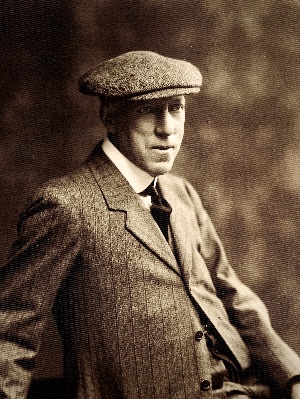Winspear, Joseph
Dancer
Collection date: Dec 1912
Area: Yorkshire
Joseph Winspear of North Skelton sword, Cleveland, NYorks: When the ironstone mine at North Skelton was opened in 1865 to feed the smelting furnaces at Middlesborough 15 miles away to the west, workers were drawn in from the surrounding area into newly built terraced housing. It can be difficult to trace the mining families involved and this is the case with Sharp’s informants for the North Skelton sword dance. On 23 Dec 1912 Sharp noted the Skelton Sword Dance Tune (FT2811) from James Coats and Barthy (?) but (unusually) failed to note their ages. Neither of these individuals have come up in searches in the 1911 censuses, not even if the latter’s name was ‘Boothby’, a suggestion raised by EW Cawte in Folk Music Journal 1991*.
Furthermore in his Folk Dance Notes 2/239 Sharp noted that the sword dance ceased about 20 years ago (i.e.1892) but ‘3 or 4 years ago it was revived by the old dancers’. He continued: ‘Tom Thorp, son of one of the original dancers, and himself a performer in the present North Skelton team, recently taught the dance…’ Tom Thorp has also not been found in the 1911 census; perhaps the 1921 census will be more helpful.
Sharp did, however, note another name in his field notebook (words) 1912/3 p43, that of Joe Winspear, who ‘plays air’. He did not interview Winspear in 1912, it seems, but he did meet this musician later in April 1924, when the North Skelton team (revived again in 1919) performed at the Easter School at Harrogate. Indeed Sharp presented Winspear with a silver badge for his role as musician and leader of the new side.
So who was Joe Winspear? In the Journal of the English Folk Dance Society no.1 (1927) p28 Mr Winspear stated that ‘it is now some thirty-eight years ago since I became a sword-dancer’ (i.e. 1889). He explained that he and some other young lads had learned the dance from an old Plough Stot living in Loftus, nearly 4 miles away to the east of North Skelton. Winspear had then taught this dance afresh to a new team in North Skelton. He was clearly an inspirational and an excellent teacher, for the Journal commented on the ‘finished performance’ of the new team. Sharp himself had been impressed in 1924, when he saw the team then. The Yorkshire Post of 23 April 1924 wrote: ‘An exhibition of English folk-dancing by six ironstone miners…gave rise to scenes of enthusiasm yesterday at the Easter Vacation School of Folk Song and Dance at Harrogate…It was a remarkable display. The dancers were young men of medium height and fine physique…(who) danced to an old-fashioned tune played on a concertina by another North Skelton workman, Joseph Winspear, who is himself an old sword dancer and has helped to train the team.’
There can be little doubt but that this leader was Joseph Winspear, born 14/6/1873 in Hinderwell (9 miles E of Skelton), 2nd of 7 children of George Winspear, an ironstone miner, and his wife Mary. In the 1891 census Joseph was with his parents at Loftus (as fits the story in the Journal); he was aged 17, working horses down the mine. He married Lily Gosling in October qr 1897 (ref 9d 1061) and went to live with his father-in-law Edward Gosling at Richard St, North Skelton in 1901 census (ref RG13/4567 f81 p35). Both men were working down the mine. Joseph was living at 20 Charlotte St in ‘New Skelton’ in 1911 with his 2 sons and 2 daughters. He was 35 and listed as an ‘ironstone miner’. He was on hand, therefore, for the revival of the North Skelton team in mid-1900s and after the war too.
Joseph Winspear died in January qr 1957 (Rotherham 2c 624) aged 83.
North Skelton sword dance is a popular dance today with revival teams here and abroad. Various Youtubes. Interesting information (and photos) about Skelton’s influence on surrounding teams (e.g. Lingdale Primrose sword-dancers) can be found on http://skeltonincleveland.com/SkeltonE70.html Rolf Gardiner had a long association with the North Skelton team and this is explained in that website too.
Gordon Ridgewell also discussed the North Skelton dance in Folk Music Journal vol9 no.5 (EFDSS 2010) pp813-814.
*Cawte wrote: ‘Mr J Boothby was an elderly musician who played the melodeon for the North Skelton White Rose Sword Dancers…in 1956. Maud Karpeles could not trace J Boothby in Sharp’s notes, but suggested he was ‘Barthy’’. Folk Music Journal vol16 no.2 (EFDSS 1991).

